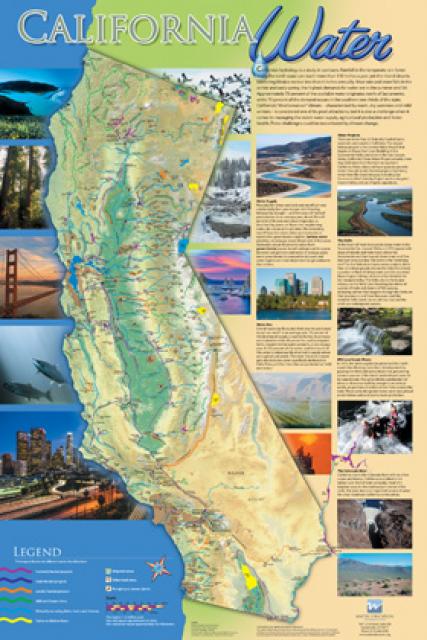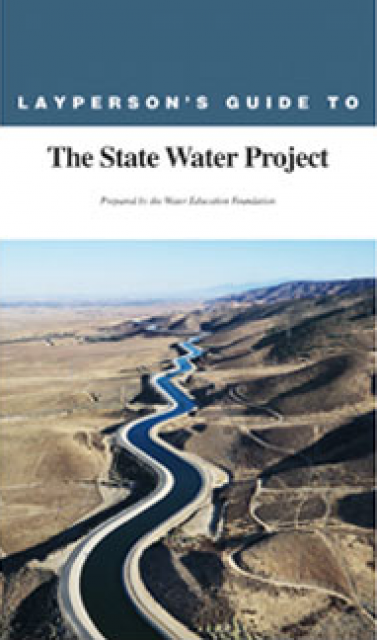As He Steps Aside, Tim Quinn Talks About ‘Adversarialists,’ Collaboration and Hope For Solving the State’s Tough Water Issues
WESTERN WATER Q&A: Tim Quinn, retiring executive director of Association of California Water Agencies
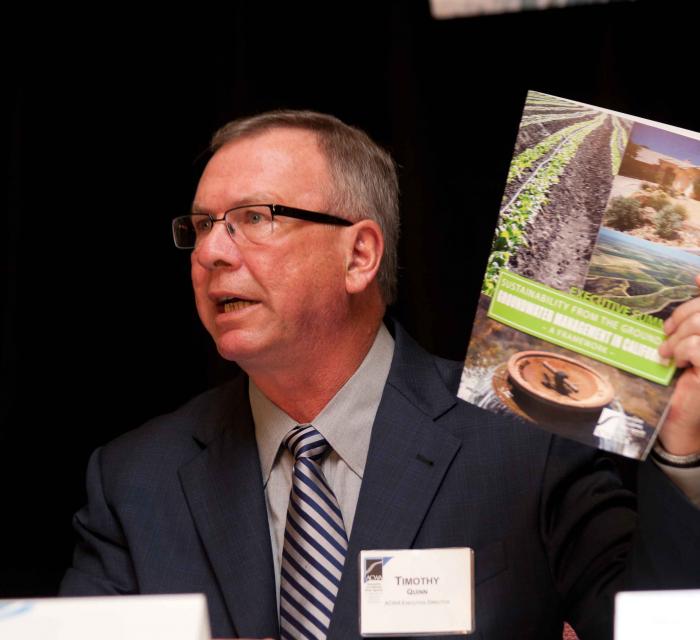 In the universe of California water, Tim Quinn is a professor emeritus. Quinn has seen — and been a key player in — a lot of major California water issues since he began his water career 40 years ago as a young economist with the Rand Corporation, then later as deputy general manager with the Metropolitan Water District of Southern California, and finally as executive director of the Association of California Water Agencies. In December, the 66-year-old will retire from ACWA.
In the universe of California water, Tim Quinn is a professor emeritus. Quinn has seen — and been a key player in — a lot of major California water issues since he began his water career 40 years ago as a young economist with the Rand Corporation, then later as deputy general manager with the Metropolitan Water District of Southern California, and finally as executive director of the Association of California Water Agencies. In December, the 66-year-old will retire from ACWA.
The eternally optimistic Quinn (a large sign on his desk proclaims “I Am an Optimist”) preaches collaboration, compromise and understanding as the keys toward achieving practical and durable solutions to the tough, complex water issues California faces. A core principle of his career, he said, is the belief that while you may be my enemy today, you are going to be my ally tomorrow.
He’s been a close observer and frequent architect of developments and agreements that have reshaped how water is managed in the state, including the Sustainable Groundwater Management Act of 2014, the Proposition 1 water bond from 2014 and most recently ACWA’s role in helping to shape the Brown administration’s Water Action Plan, the roadmap that aims to put California on a path to sustainable water management.
Quinn was front and center in the very vocal fight concerning the proposed water tax that would have established a special fund to assist those who do not have safe drinking water. ACWA opposed the tax and the proposal was defeated.
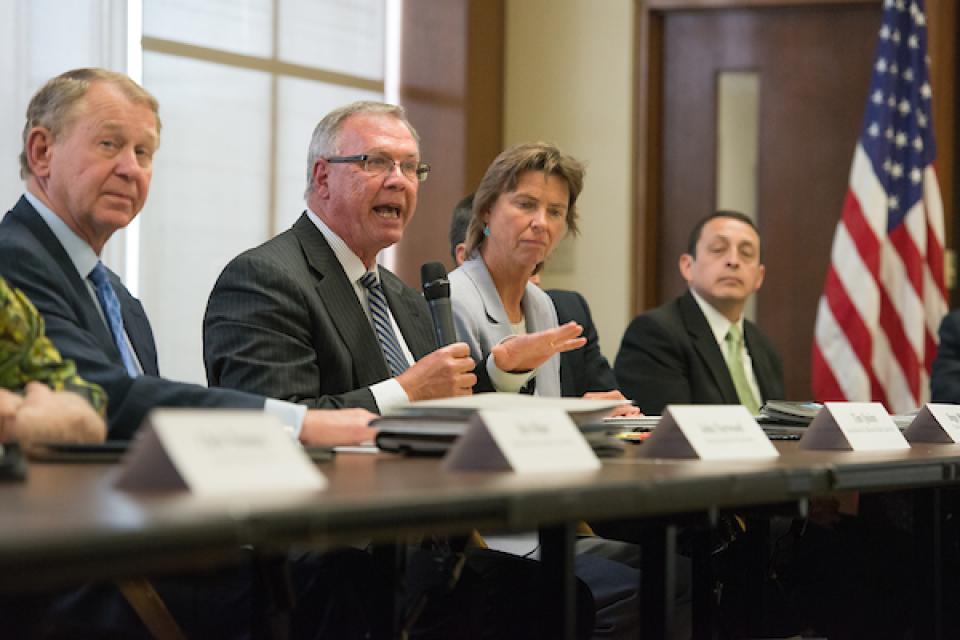 Although he’s retiring from ACWA after 11 years, Quinn said he plans to remain involved as a voice of experience as he heads for a fellowship at Stanford University’s Water in the West Program, possible teaching and writing a book about water policy.
Although he’s retiring from ACWA after 11 years, Quinn said he plans to remain involved as a voice of experience as he heads for a fellowship at Stanford University’s Water in the West Program, possible teaching and writing a book about water policy.
He talked with Western Water’s Gary Pitzer about his “rather unusual” career, the continuing water wars (“Right now, I feel like the ‘adversarialists’ are winning,” he said.) and what he sees as the challenges and opportunities ahead in California water.
The transcript has been edited for clarity and length.
WW: As you depart, what do you look back on in terms of your accomplishments?
QUINN: I have been a part of some major change over the course of my career. I’m proud of it. My generation of water managers … is filled with people who developed the local resource and I think the implications of that are much bigger than we get credit for — this remarkable turnaround shifting emphasis away from more imported water and toward developing the local supply. That has been hugely important to California’s economy and environment.
“In my career there’s always been this conflict between those of us who believe in collaboration and those who want to solve problems through adversarial processes, whom I label “adversarialists.”
~Tim Quinn, retiring executive director of ACWA
The second thing is that I have been a player in the rise of coequal goals. My first exposure to it was the Central Valley Project Improvement Act in which I was a negotiator. CVPIA was all about coequal goals. We didn’t use the term then, but it was the first major legal step that said we have to operate this system both for water supply and for the environment. From there, it was a steady progression of the coequal goals where you as a water manager had to worry about the ecosystem as much as you did water supply. I think that runs deep in the current generation of water managers and I’m proud to have played a part in that.
In my career there’s always been this conflict between those of us who believe in collaboration and those who want to solve problems through adversarial processes, whom I label “adversarialists.” It is important that we continue to work toward collaborative solutions, which have to be comprehensive, have to be big tent and have to be complicated if they are going to work. Then to protect these collaborative processes, you have to make sure that you empower people to make decisions. One problem with collaboration is, it can be like putting your car in neutral — you don’t go anywhere.
I’ve always told my staff, both at Metropolitan and here at ACWA, ‘War is easy. It’s just go into your silo and say the same thing the guy next to you is saying. You don’t solve problems, but your job is safe. Collaboration is hell. You have to leave your silo and get other people to leave their silo and make compromises that will not be popular back in your silo. But that’s the only way to make progress.’
WW: You were instrumental in such noteworthy agreements as the Drought Water Bank, the Bay-Delta Accord and the Monterey Amendment. How did the process for those germinate?
QUINN: As an economist, I think its fair to say I had a rather big impact on the direction of California water. It’s all because of [former MWD General Manager] Carl Boronkay. He saw the need for change coming out of the ’82 vote on the Peripheral Canal. He wanted to build a multidisciplinary team around him and change the DNA of the people that plan Southern California’s water future. It was just an incredible, robust and exciting environment to be in.
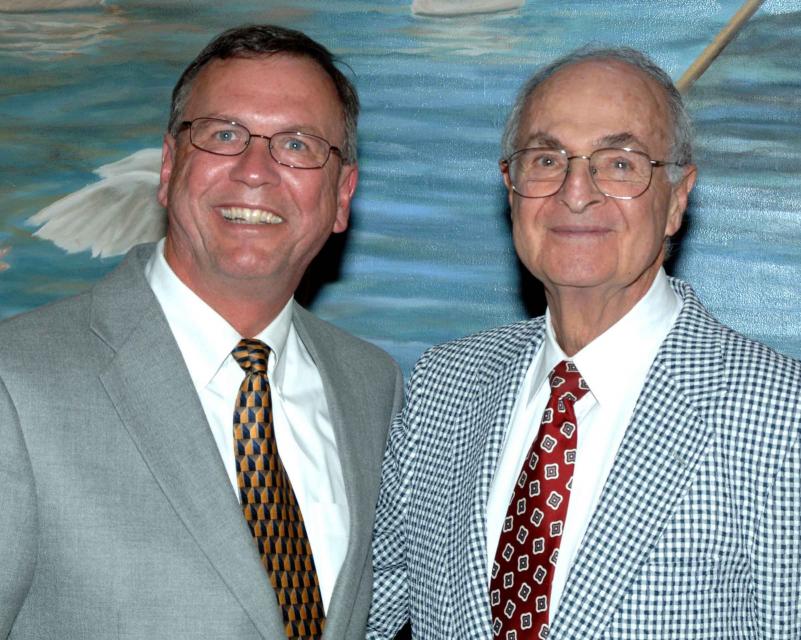 Some of the first work I did was on the reliability of our water supply. I did the slide show for the board showing that … our water supply was only 50 percent reliable because the State Water Project had not been completed. We did studies that said the public was willing to pay a lot of money to solve that problem. That was very motivating for the board of directors and Boronkay understood exactly what he was doing and why he was doing it. That led to incentive programs to make expensive technologies pencil out compared to MWD supplies.
Some of the first work I did was on the reliability of our water supply. I did the slide show for the board showing that … our water supply was only 50 percent reliable because the State Water Project had not been completed. We did studies that said the public was willing to pay a lot of money to solve that problem. That was very motivating for the board of directors and Boronkay understood exactly what he was doing and why he was doing it. That led to incentive programs to make expensive technologies pencil out compared to MWD supplies.
The 1987 to 1992 drought put an exclamation point on the ‘you are not reliable’ message that we had been sending even before the drought started. The MWD had to go to mandatory rationing and they really had to mean it in 1990 and 1991. The 1991 Drought Water Bank started on a lunch napkin with [me], (former Kern County Water Agency General Manager) Tom Clark and some other state water contractors. We outlined what a drought water bank might look like and sold that idea to (former California Department of Water Resources Director) Dave Kennedy. He went to the governor and within 24 hours we were in business.
It was definitely a demonstration of the power of the marketplace. Nobody thought we could buy water during a drought, but it turns out we bought 800,000 acre-feet of water. To me, it showed the power of new directions in water management.
WW: Even though the debate about saving the Delta continues, the Bay-Delta Accord was a big deal.
QUINN: The Bay-Delta Accord was probably the biggest collaborative solution that I was ever a part of. It was a real triumph of collaboration over adversarialism, but it was not universally supported by a lot of environmentalists, many of whom wanted to solve these problems in court. You can’t say enough positive things about the Environmental Defense Fund, people like Tom Graff — the greatest environmental leader I ever worked with. (Graff, who passed away in 2009, was a key architect of agreements such as the Central Valley Project Improvement Act and the Bay-Delta Accord that designated adequate environmental flows.)
“The water managers in the Central Valley knew they needed something like SGMA. It is a sound law because it was from a very collaborative process where the only rule was you had to want to solve the problem; you couldn’t pretend there was no problem.”
~Tim Quinn, retiring executive director of ACWA
The Accord wasn’t perfect — we had imperfect science, we did the best we could. On our side of the table, we were recognizing that we had to manage flows for the environment as well as for water supply and the Accord was a big deal in that regard.
We were doing the Monterey Amendments at the same time, which is probably the most misunderstood thing I ever accomplished in my career but one of the best. It was just as important as Southern California turning to alternative sources of supply. It was the contractors recognizing they had to take responsibility for their future — DWR wasn’t going to be able to do it — so we started developing the tools to manage water better at the local level, especially storage. Monterey gave us the modern tools that we needed to manage water in a smarter way with a special emphasis on developed storage south of the Delta, so you could take that water when it was available, reduce your demands and put that water into storage.
The Monterey Amendment and the CALFED Bay-Delta Accord were completed within two weeks of each other. It was just a huge spike in striking a collaborative outcome.
WW: What are your thoughts on WaterFix as you depart?
QUINN: I think the ACWA board has the right policy about the Delta. They fully recognize it’s a broken place, it’s not working for water supply or the Delta ecosystem or the rest of California. It requires a hardware change, something that looks like WaterFix. I can’t say we support a specific approach because I’ve got members in dispute.
“If the only thing you want to talk about in California water is the Delta, the only thing you will have is an argument. You have to put Delta solutions in the context of a statewide comprehensive plan and get people to look at the package, not the project.”
~Tim Quinn, retiring executive director of ACWA
The tunnels don’t open vast amounts for a water grab — they move the intakes from point A to point B, and point B is a lot better than point A for fish, for water quality, for earthquake preparedness, for climate change, and for all of those reasons you need to move the intake, but that’s all you are doing. If the only thing you want to talk about in California water is the Delta, the only thing you will have is an argument. You have to put Delta solutions in the context of a statewide comprehensive plan and get people to look at the package, not the project.
WW: Do you think the most depleted groundwater basins are going to fulfill the promise of the Sustainable Groundwater Management Act (SGMA)?
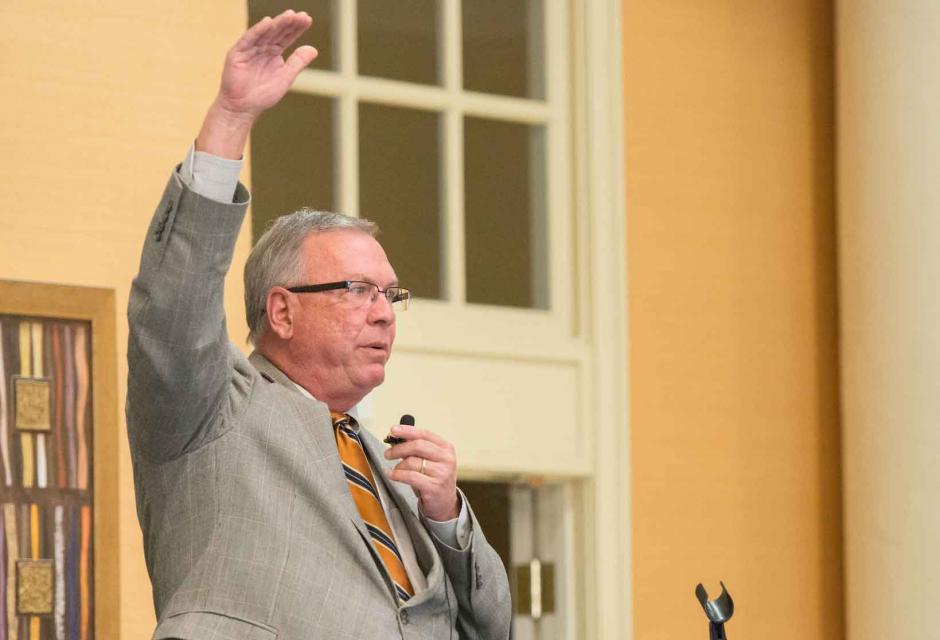 QUINN: ACWA was very heavily involved in the crafting of SGMA and we pretty much got everything we wanted. The water managers in the Central Valley knew they needed something like SGMA. It is a sound law because it was from a very collaborative process where the only rule was you had to want to solve the problem; you couldn’t pretend there was no problem.
QUINN: ACWA was very heavily involved in the crafting of SGMA and we pretty much got everything we wanted. The water managers in the Central Valley knew they needed something like SGMA. It is a sound law because it was from a very collaborative process where the only rule was you had to want to solve the problem; you couldn’t pretend there was no problem.
My impression is that the water managers in the San Joaquin Valley and many of their elected county supervisors are past the denial stage. They recognize that this is a problem. One of the things I tell them is SGMA is not your problem, the overdraft is your problem. SGMA gives you the tools to deal with it. For a while, I felt like I needed an armed guard to go down into the valley. That’s not true today. I have seen proactive solutions throughout the valley, from Bakersfield up to Redding. They are taking the tools we gave them and doing great and innovative things with them.
WW: SGMA was a major piece of water legislation. What do you see as the next plateau to be reached?
QUINN: The two big drivers are going to be SGMA and how we do the coequal goals. SGMA will force California to look at its system as a whole. It will be the lens in which we think about statewide infrastructure investments or we’ll watch those [ag] economies shrink. I don’t want to pass out of a California in which we have watched the San Joaquin Valley shrivel because of SGMA.
WW: How are we going to solve the problem of getting clean drinking water for everybody?
QUINN: We haven’t solved it through an adversarial process, have we? Frankly, I regret that the proponents of SB 623 (the water tax) chose an adversarial path, so we had no choice. I know we take a lot of criticism for that, but local government is never going to agree to become the revenue collector for state government for statewide purposes. … We are hoping we can sit down and come up with a collaborative solution. We agree it’s a huge problem. We agree it’s a disgrace. But we also agree that, because it’s so important, it doesn’t mean you can do bad policy.
- Western Water: Now Comes the Hard Part: Building Sustainable Groundwater Management in California, Summer 2017
- Western Water: The Delta at a Crossroads, Spring 2016
- Western Water: Meeting the Co-equal Goals? The Bay Delta Conservation Plan, May/June 2013
Know someone else who wants to stay connected with water in the West? Encourage them to sign up for Western Water, and follow us on Facebook and Twitter.









